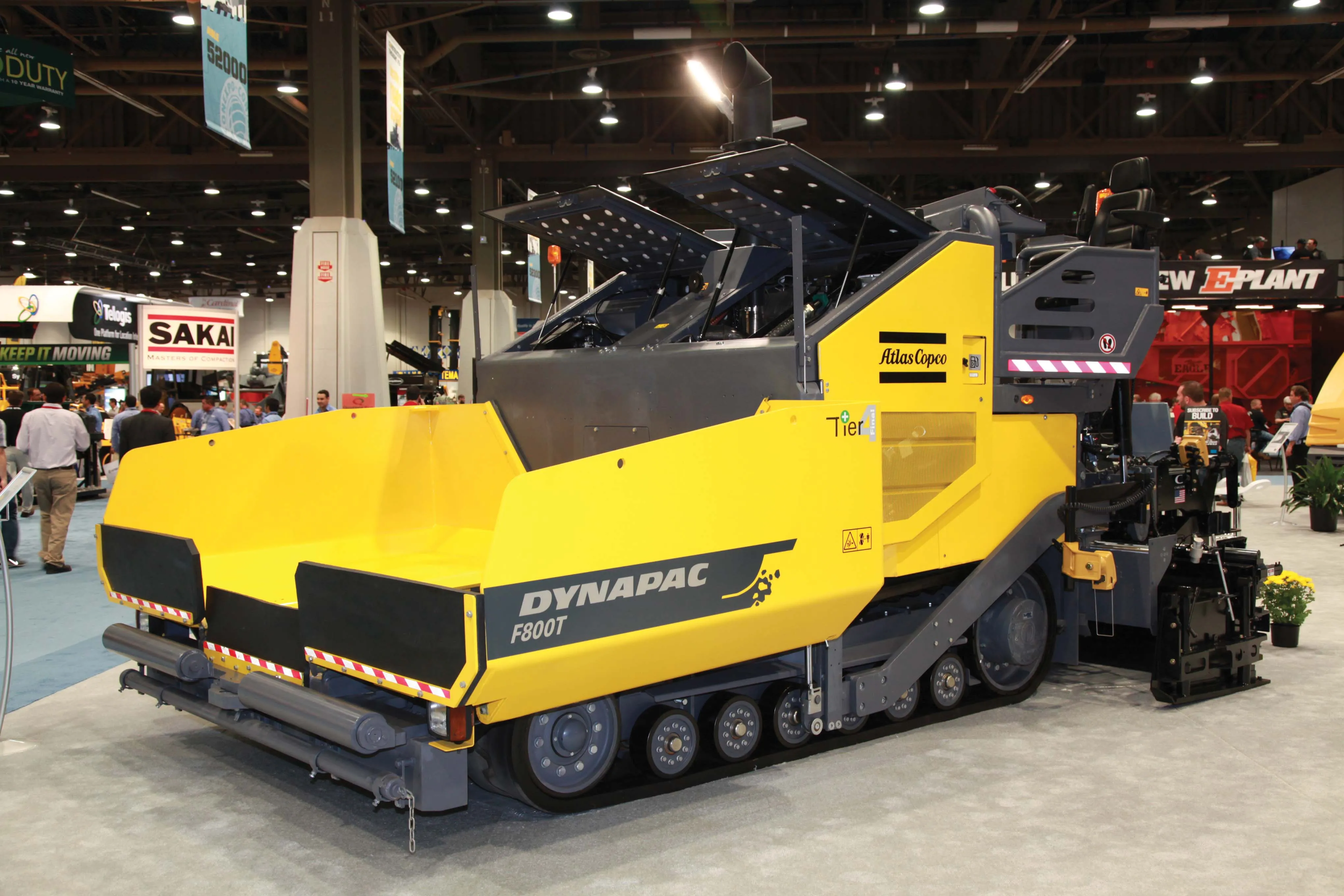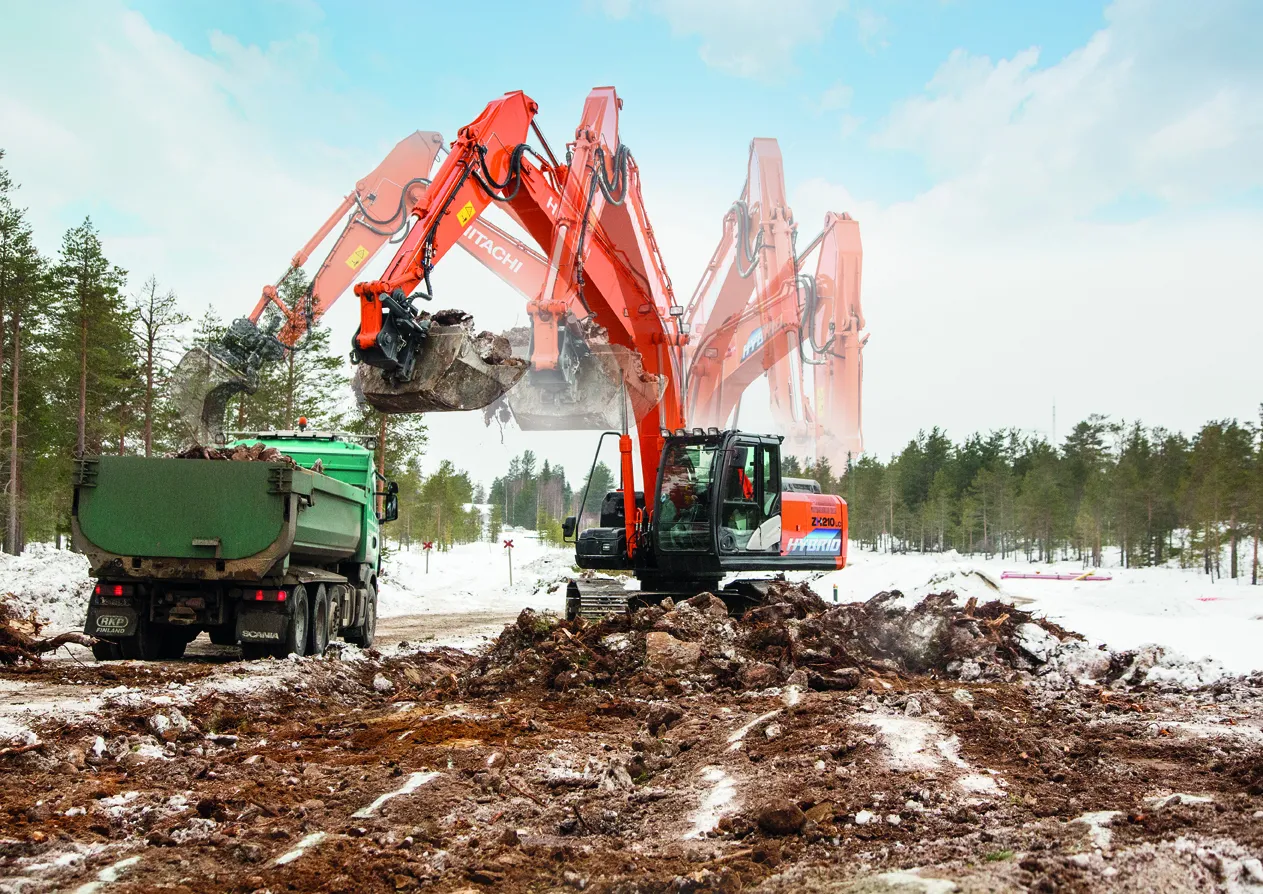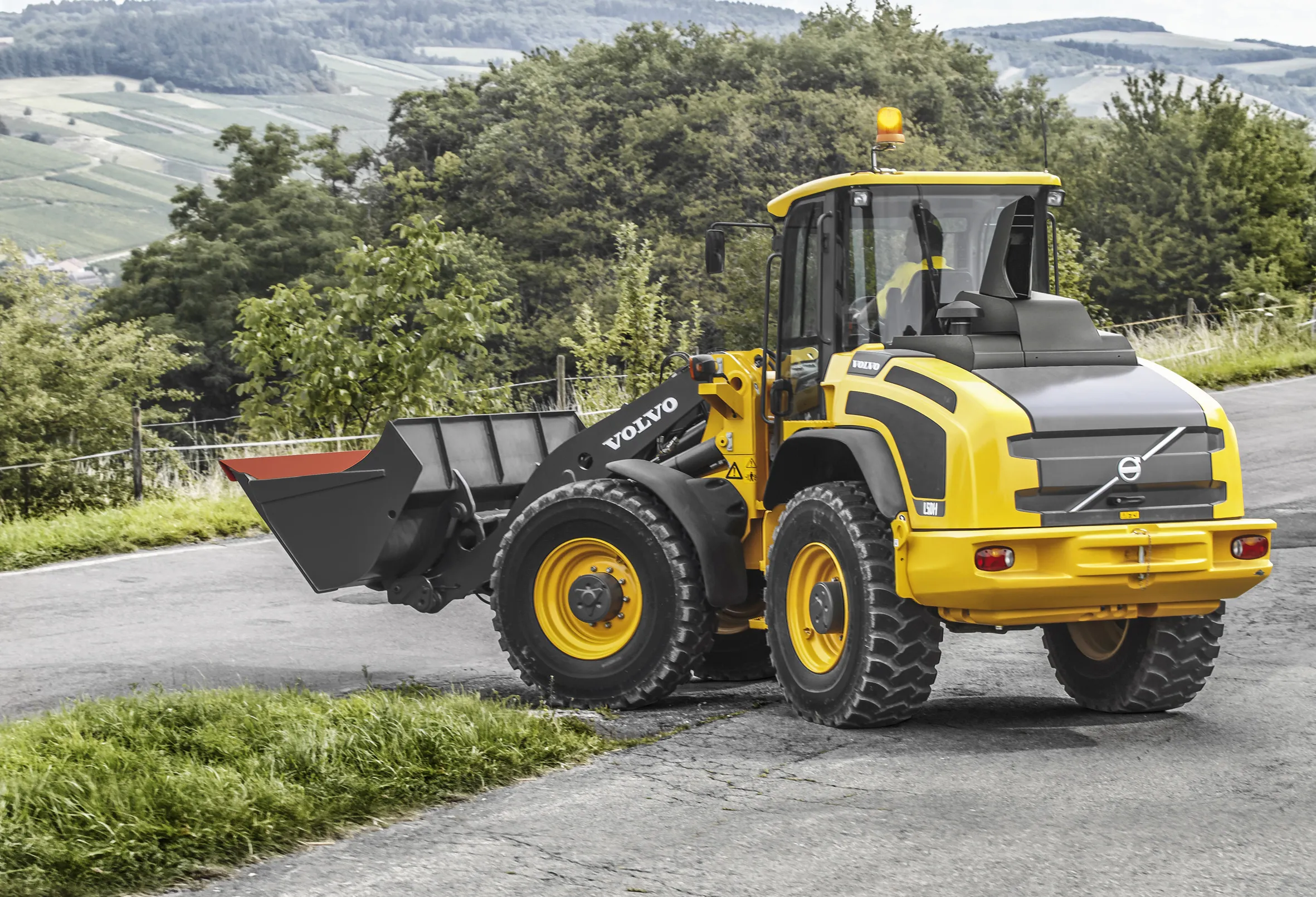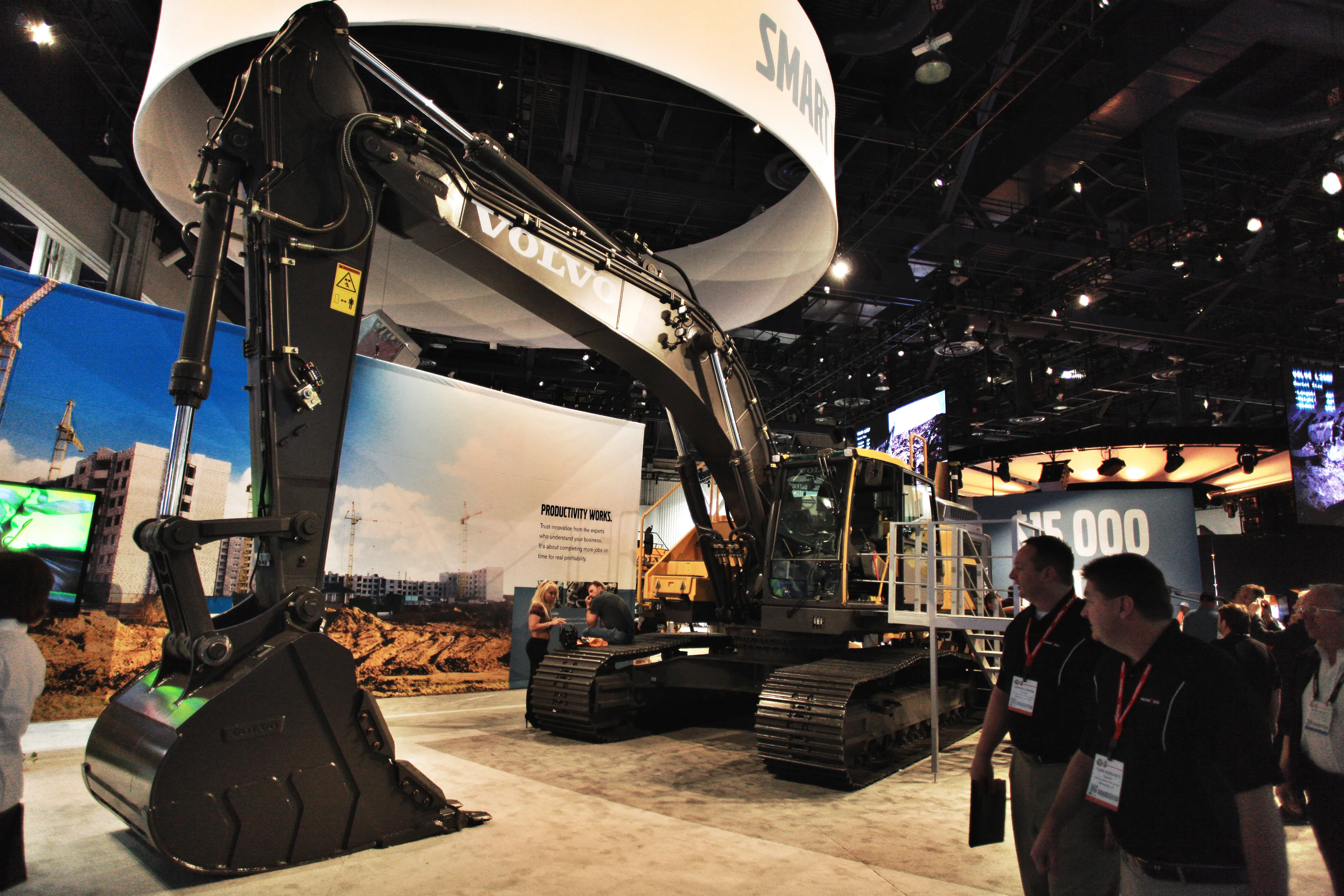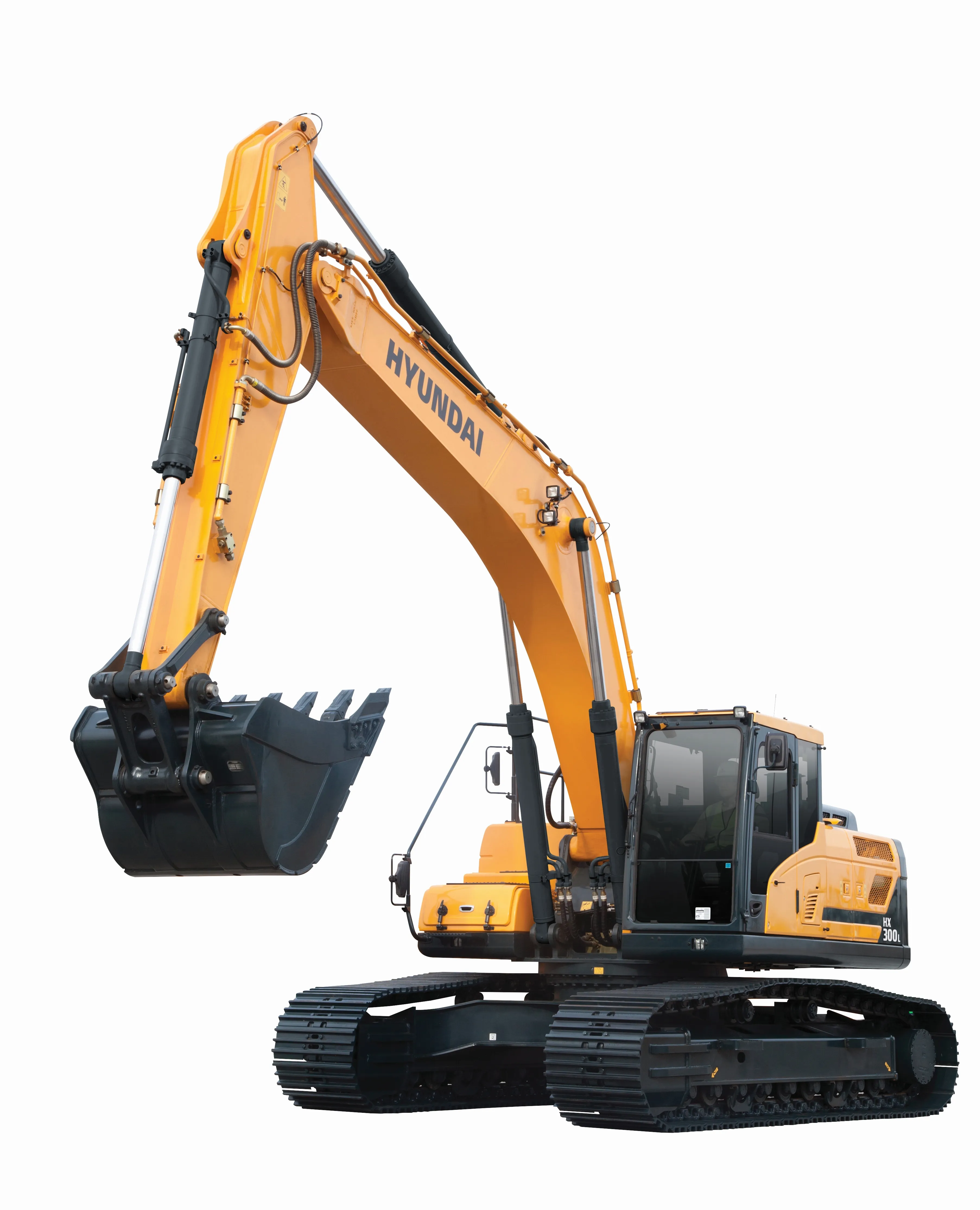
For the HX220 L, HX260 L, HX300 L, HX330 andHX380 L models, the engineers at Hyundai have utilised the Tier4/ Stage IV emission requirement to re-develop the machines from scratch. The South Korean-headquartered firm says that many improvements from operator feedback have been implemented to create ultimately better, stronger and more robust machines for customers worldwide.
Hyundai has opted for a combined Tier 4/Stage IV standard solution of EGR and SCR technologies. Concurrently, a reduction in fuel consumption of 3-6% is also said have been achieved. The HX220 to HX380 crawler excavators are equipped with new
With the new engine technology the side vent holes have increased in size for a better airflow towards the engine.
The cabin of the six new excavator models has been redesigned: not just the front window but also the door, which is now easier to open from the inside with an extra handrail. These finishing touches on the inside of the cab are said to ensure greater comfort for the operator. The interior of the cabin has been re-arranged to provide 10% more space for the operator and better air circulation with the newly developed air-conditioning system.
Inside the cabin there is also a new and bigger monitor. Easier to read, full colour and with more functions including centralised switches for a number of applications. Connection with a mobile phone is now easier than ever as well as connections with outside cameras for an all-round view.


